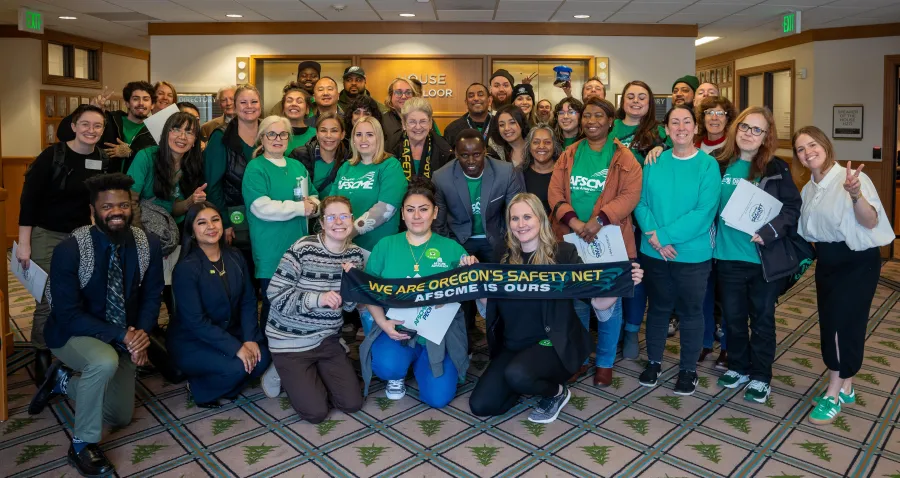Victory for SACU: Workers Fight Back Massive Cuts

In a major win for workers at the Stabilization and Crisis Unit (SACU), represented by Oregon AFSCME Local 1246, workers successfully pushed back against devastating cuts proposed in the Governor’s Recommended Budget for 2025–27.
The Governor’s recommended budget slashed SACU’s funding in half, which would shutter half the residential homes and eliminate 372 jobs. Even more alarming, ODHS proposed a drastic shift in the mission of SACU without input from the people who matter most: the residents, their families, or the staff who care for them every day.
SACU, which operates under the Oregon Department of Human Services (ODHS), provides critical residential care and crisis stabilization for individuals with intellectual and developmental disabilities (I/DD). These are some of Oregon’s most vulnerable residents—people with complex behavioral and medical needs who rely on consistent, well-trained staff and highly structured care environments. SACU homes are often the only option for individuals who cannot safely be served elsewhere.
“Instead of collaborating with staff and the families to make a decision about SACU’s future, the agency proposed cuts without a plan in place for the individuals currently in our care,” says Christina Sydenstricker-Brown, President of Local 1246. “Their rash decision would push residents into private care homes, which have already proved to be unable to meet the acute needs of our individuals.” SACU workers knew what was at stake, so they sprang into action.
From the moment they heard about the cuts, SACU workers with Local 1246 mobilized. They testified at three separate budget hearings, bringing real stories from the front lines about residents who have thrived under SACU’s care and about what would be lost if the homes were closed. They demanded transparency and insisted that any transition must be guided by the needs of residents, not by a budget-line mentality.
In March, they escalated their campaign with a dedicated SACU lobby day at the Capitol. Workers met directly with lawmakers, painting a vivid picture of what it would mean to displace residents and dismantle the program with no viable alternative in place. They emphasized that SACU doesn’t just fill a gap in Oregon’s care system; it is the safety net for people with the highest level of need.
And on June 5th, SACU workers rallied on the Capitol steps with nearly 2,000 other state workers to send a powerful message: Oregon cannot afford to turn its back on vulnerable people. They called on lawmakers to preserve SACU funding and fulfill their commitment to treating these individuals with dignity.
That same day, they learned their efforts had paid off.
Lawmakers rejected the proposed cuts and upheld the current service level funding for SACU for the upcoming biennium. They also issued a clear direction to ODHS: if SACU is going to be a successful short-term crisis program, it must be done thoughtfully, with a clear plan developed in partnership with stakeholders.
“We came together and fought this, and we made a huge difference. We know that changes are coming for SACU, but it feels great to know that we will still have our jobs and be able to help guide that transition to best suit the needs of the individuals we serve,” says Sydenstricker-Brown.
SACU workers have shown that when frontline staff raise their voices, they can change the course of public policy. The fight for SACU’s future isn’t over. But today, because of their collective action, it’s a future that still exists.
